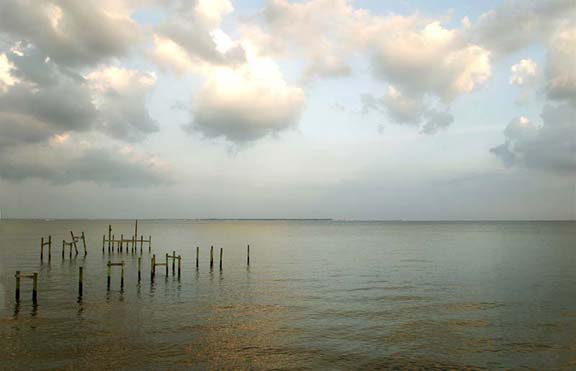Color Temperature and White Balance, Fixes and Enhancements with NIK Software

Digital Photo Academy and LivinginHD present a free monthly series of photography webinars on LivinginHD.com. Your host, John Bentham answers many questions live during the webinars. Additional questions, answers and tips are posted here on digitalphotoacademy.com where you can also view the archived webinars.
White Balance: The Auto White Balance feature (AWB) of your digital camera is designed to compensate and correct for different light sources. In theory effectively correcting any color cast to neutral thus rendering white as white, gray as neutral gray etc. Auto White Balance works well in many situations but Auto White Balance is somewhat of a misnomer and should more accurately be called Average White Balance. Essentially the system mixes all the light from different color temperature light sources in a scene, jumbles them together and assigns a corrected color balance to each photograph. The Auto White balance setting will work to remove a color cast that is warm, pink or blue. Sometimes its better to try a different WB setting, such as Daylight thus maintaining a color cast that makes a photo distinctive. LCD camera screens give a pretty accurate rendition of color in a photo. By trying different WB settings as you shooting you can preview what the color will look like.

Photo by John Bentham, DPA Instructor New York
After experimenting with different White Balance settings in-camera Johns’ photo above was captured in Auto White Balance after finding it gave the most pleasing color temperature and soft muted color effect.
Color Temperature is measured in degrees Kelvin. Kelvin is a temperature scale much like Fahrenheit or Celsius although Kelvin measures the color temperatures of wavelength of light. Its important to remember Kelvin works counter opposite and counter intuitively to the Celsius or Fahrenheit scales. In the Kelvin scale the higher temperature the cooler the light source, thus the cooler the subject it illuminates appears. IE: 5000 degrees appears a cool blue while a lower temperature of 3200 degrees appears warmer.
By experimenting with the different pre-set white balance settings available in your camera you have a much better chance of capturing the correct white balance. To capture a more precise and accurate color balance you should set a Custom White Balance for each different lighting scenario. Where the whole white balance system wavers or simply falls apart is when you are shooting in mixed lighting conditions. As previously stated the camera WB system will correct white balance by averaging out the white balance in mixed light. However in some situations the system will ere towards the most predominate color temperature. If the strongest light source is a relatively cool daylight coming in through windows the camera will render a correct (often referred to as normal), white balance for daylight. If there is another light source in the scene with a completely different color balance the area of the scene illuminated by that source will appear as a much different color balance. There are a number of instances that through off color balance. Its is important to remember light can change color depending on the surfaces it is reflected off. If you bounce an electronic flash which has a color temperature of approximately 5000 K depending on the manufacturer and factors such as UV filtered flash tubes, into a red painted wall the relatively cool color temperature of the flash light source bounces back as a much redder light with a completely different, much warmer color temperature.

Photo by Steve Dunwell, Boston DPA Instructor
The photo above by Steve Dunwell shows a distinct warm, rosy violet color cast which technically could be considered incorrect however that is precisely what makes it appealing.
This is where NIK Software can help, quickly and painlessly. Using NIK Viveza Software and applying carefully placed Control Points you can easily correct and remove incorrect color casts in select specific portions of a photograph. NIK works as a Plug-In for Photoshop, Aperture or Lightroom. The software is great for this and I find it works much faster than Photoshop alone for this type of correction. NIK Software coupled with Photoshop is a great color correction system especially when shooting in mixed light conditions.
Alternatively you can also apply NIK Viveza Software to intentionally alter the color of an image when you desire a more creative technique. Basic adjustments such as warming filters, brightness and contrast controls can be adjusted globally or specifically to areas of interest the photographer wishes to enhance. For additional filters NIK Color Efex Pro offers a number of preset filters and color effects which can easily be applied with a click.
Following is a list of the color temperature in degrees Kelvin of many of the most common light sources. The Cooler, higher temperatures (Blue) are at the top of the list, as you move down the list the temperatures move towards the warmer (Red) temperatures.
Cooler Colors – Blue
Blue Sky: 12,000 – 20,000
Average Summer Shade: 8000
Light Summer Shade: 7100
Typical Summer Light. Illumination from both sun and sky: 6500
Daylight Fluorescent: 6300
Overcast Sky: 6000
Clear Mercury Lamp: 5900
Sunlight – Noon, summer, mid-latitudes: 5400
Design White Fluorescent: 5200
Daylight Photoflood: 4800 – 5000
Sunlight – Early morning and late afternoon: 4300
Brite White Deluxe Mercury Lamp: 4000
Sunlight – Sunrise 1 hour after dawn: 3500
Cool White Fluorescent: 3400
Photoflood: 3400
Professional Tungsten Photographic Lights: 3200
100-Watt Tungsten Halogen: 3000
Deluxe Warm White Fluorescent: 2950
100-Watt Incandescent: 2870
40-Watt Incandescent: 2500
Sunlight – Sunrise or Sunset: 2000
Candle Flame: 1850 – 1900
Warmer Colors – Moving towards Orange and Red



